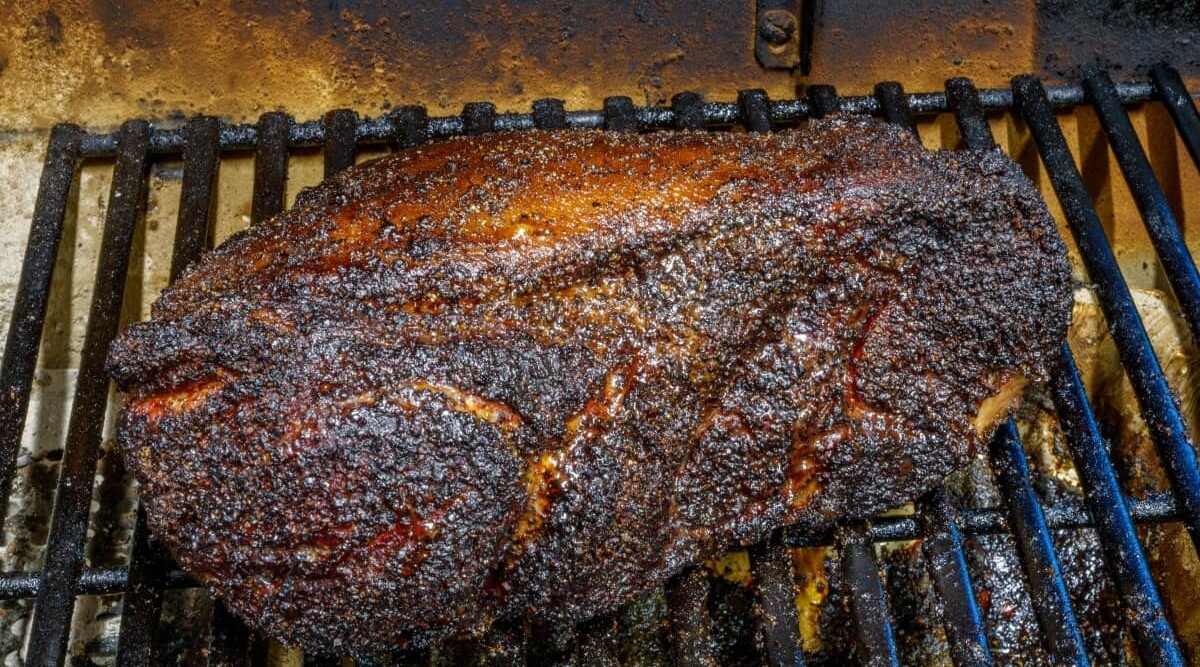
Pork butt and pork shoulder, both from the front legs of the pig, are distinct cuts often confused with one another. Pork butt, originating from the upper shoulder near the neck, is notable for its fat marbling and tenderness. Pork shoulder, from the lower shoulder beneath the pork butt, is leaner and has a firmer texture.
So, while you can use both of these cuts to make pulled pork, the shoulder and the butt are two different cuts of meat, although they do come from the same general area on the hog.
This article takes a detailed look at the pork butt vs the pork shoulder, examining their differences, discussing texture, flavor, optimal cooking methods, and more.
Continue reading to learn all you’ll ever need to know about these versatile pork cuts.
Jump to:
- 1 Pork Butt vs Pork Shoulder Comparison Table
- 2 The Differences Between Pork Butt and Pork Shoulder
- 2.1 What is Pork Butt?
- 2.2 What is Pork Shoulder?
- 2.3 Comparison of Size, Weight, and Servings per Joint
- 2.4 Differences in Flavor, Texture, and Fat Content
- 2.5 When to Use Pork Butt
- 2.6 When to Use Pork Shoulder
- 2.7 Nutritional Information for Each Cut
- 2.8 Price Comparison
- 2.9 Which Requires Most Work to Cook?
- 3 What to Look for When Buying Pork Butt or Shoulder
- 4 Conclusion
Pork Butt vs Pork Shoulder Comparison Table
Let’s put the bottom line up front, and look at the main points of comparison between these two cuts.
| Factor | Pork Butt | Pork Shoulder |
|---|---|---|
| Description | Pork butt is a cut of meat from the most upper part of the shoulder from the front leg of the pig. | Pork shoulder comes from the lower portion of the pig's shoulder from the front leg of the pig, underneath the pork butt. |
| Also Known As | Boston butt, Shoulder butt | Picnic shoulder, Picnic roast |
| Average Size and Weight | Typically 5 to 12 pounds | Usually smaller than pork butt, around 3 to 8 pounds |
| Average Servings per Joint | Generally serves 8-15 people | Typically serves 6-12 people |
| Fat Content | Higher fat content, which contributes to its flavor and tenderness | Slightly less fat compared to pork butt |
| Tenderness | Very tender due to the fat content and connective tissues | Tender, but slightly less so than pork butt |
| Flavor | Rich and flavorful due to higher fat content | Flavorful, but slightly less intense than pork butt |
| Texture | Soft and easy to shred, ideal for pulled pork | Slightly firmer texture, still good for shredding, but better served sliced as a roast |
| Location on the Pig | Upper part of the front leg shoulder | Lower part of the front leg shoulder |
| Best Used For | Pulled pork, slow-cooked dishes, smoking | Roasting, slow-cooking, smoking, braising |
| Ease of Cooking | Easy to cook, forgiving due to fat content | Easy, but requires a bit more attention than pork butt |
| Nutritional Information (per 100g) | Approximately: 242 kcal, 21g protein, 17g fat | Approximately: 237 kcal, 20g protein, 16g fat |
| Price Comparison | Generally more expensive due to popularity and tenderness | Typically less expensive than pork butt |
The Differences Between Pork Butt and Pork Shoulder
In the following sections, we’ll explore the nuanced differences between pork butt and pork shoulder.
These two popular pork cuts are often used interchangeably but have distinct characteristics that influence best to use each cut.
So let’s look into where they come from on the pig, from their texture, cooking methods, and nutritional profiles, to help you understand and choose the right cut for your next meal.
What is Pork Butt?
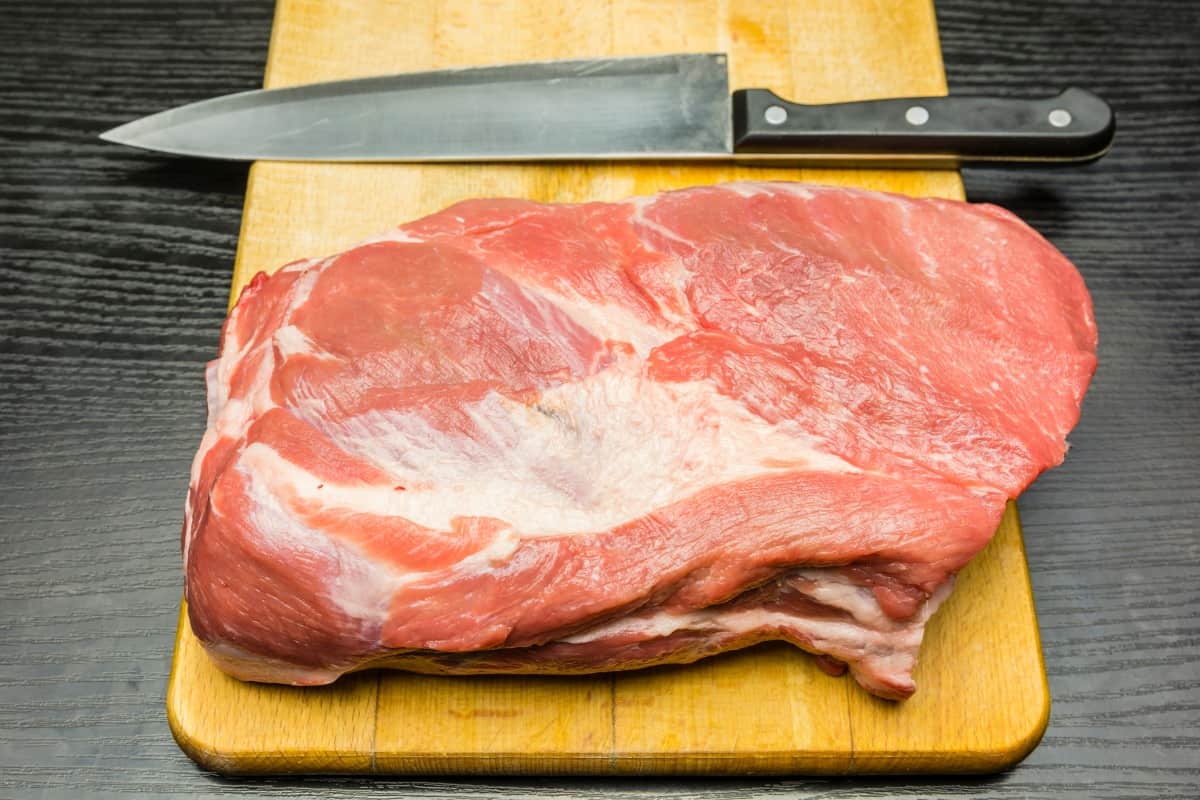
Known as the Boston butt, pork butt comes from the upper part pork shoulder near the spine, front legs only (the rear shoulders are the ham.). This large, rectangular cut, usually skinless, is rich in marbled fat and connective tissue.
Your butcher might leave the shoulder blade in the pork butt, which is fine. You can cook it either bone-in or bone-out.
The term “Boston butt” originates from the historical practice of shipping pork shoulders in barrels, also called butts. Additionally, Boston butchers had a specific method of preparing this cut, leading to its distinctive name.
What is Pork Shoulder?
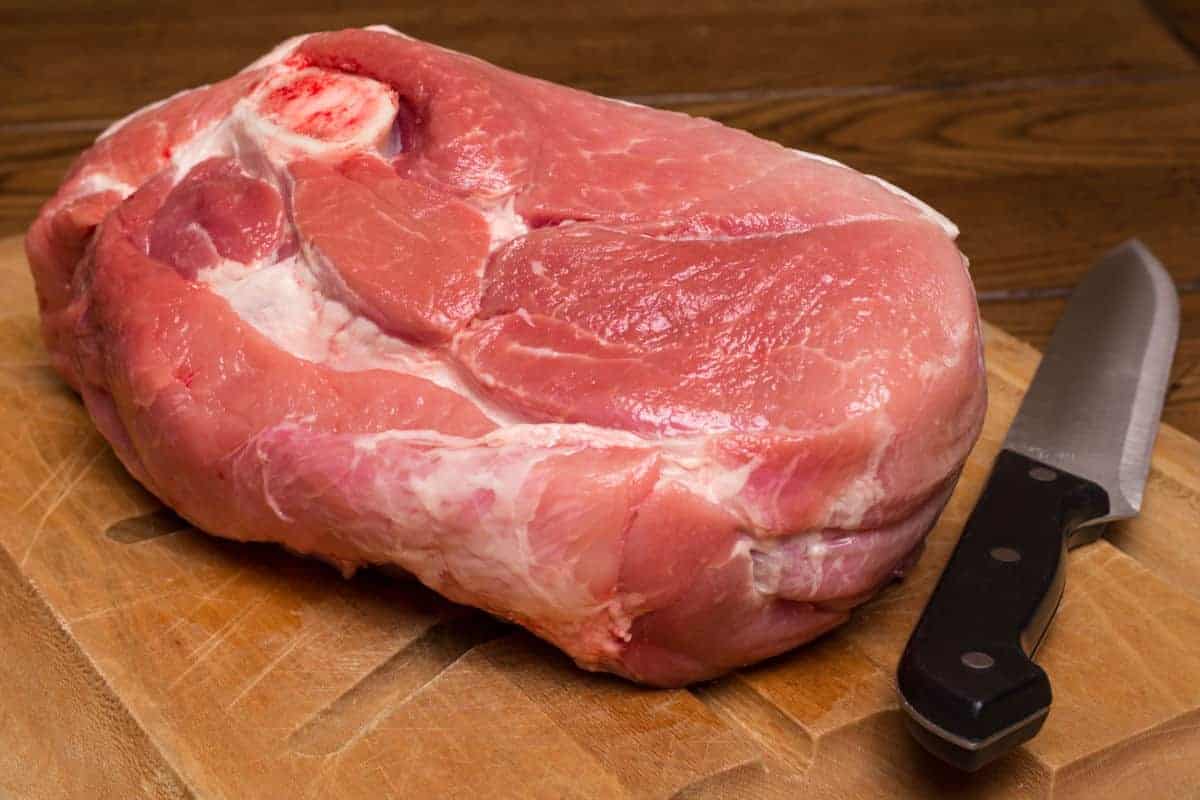
Still from the front legs only (because the rear leg shoulders are the ham), just below the Boston Butt is a much smaller cut simply called the pork shoulder.
When the top part of the leg, also known as the hock, is attached it’s called a picnic ham or picnic shoulder. Regardless, the skin is typically still attached.
Since the meat on the leg muscles works harder than the meat in the Boston butt, this cut will need to be cooked until the internal temp reaches 195 °F so that it is tender.
Comparison of Size, Weight, and Servings per Joint
Pork butt and pork shoulder, while both from the front leg of the pig, differ in size, weight, and the number of servings they provide.
Pork butt is a larger, rectangular cut typically weighing between 5 to 12 pounds. It’s substantial enough to serve approximately 8 to 15 people, making it a popular choice for gatherings and family meals.
On the other hand, pork shoulder, often called picnic shoulder, is somewhat smaller and more triangular. Its weight usually ranges from 3 to 8 pounds, making it suitable for serving around 6 to 12 people.
Differences in Flavor, Texture, and Fat Content
Pork butt is the choice for those seeking a richer, more indulgent flavor and a tender texture, while pork shoulder offers a slightly leaner option with a firmer texture, still maintaining a good depth of flavor.
Pork butt, known for its rich flavor, owes its taste profile to a higher fat content and more connective tissues than the picnic shoulder. This fat and connective tissue, marbled throughout the cut, not only enhances the flavor but also contributes to a softer, more tender texture when fully rendered out over hours of cooking. The meat from pork butt is particularly succulent. It is ideal for dishes with a desired melt-in-the-mouth consistency, like pulled pork.
In contrast, pork shoulder has a slightly less intense flavor compared to pork butt. The fat content in pork shoulder is lower, as is the amount of connective tissue, which subtly influences its overall taste. Although still tender and flavorful, the texture of pork shoulder is a bit firmer compared to the buttery softness of pork butt. This makes it suitable for recipes that require a bit of texture and bite, such as roasts, slicing, or stews.
When to Use Pork Butt

Pork butt, with its intense fat marbling and abundant connective tissue, withstands extended cooking times. This makes the cut perfect for barbecue pulled pork, braising, and stewing, where the long cooking time tenderizes the meat and melts the fat.
It’s ideal for recipes requiring tender, flavorful meat, like pulled pork, carnitas, or stews. Additionally, pork butt is suitable for roasting (though less so than picnic shoulder). Cook it to an internal temp of 165 °F and serve it as a roast, sliced. The money muscle is particularly good served sliced and not pulled.
Lastly, another great use for this cut is to have your butcher slice it into pork steaks and then cook them indirect at a low temperature until the internal temp reaches 160 °F. You will still have delicious melt in your mouth porky goodness but in convenient individual sized portions.
When to Use Pork Shoulder
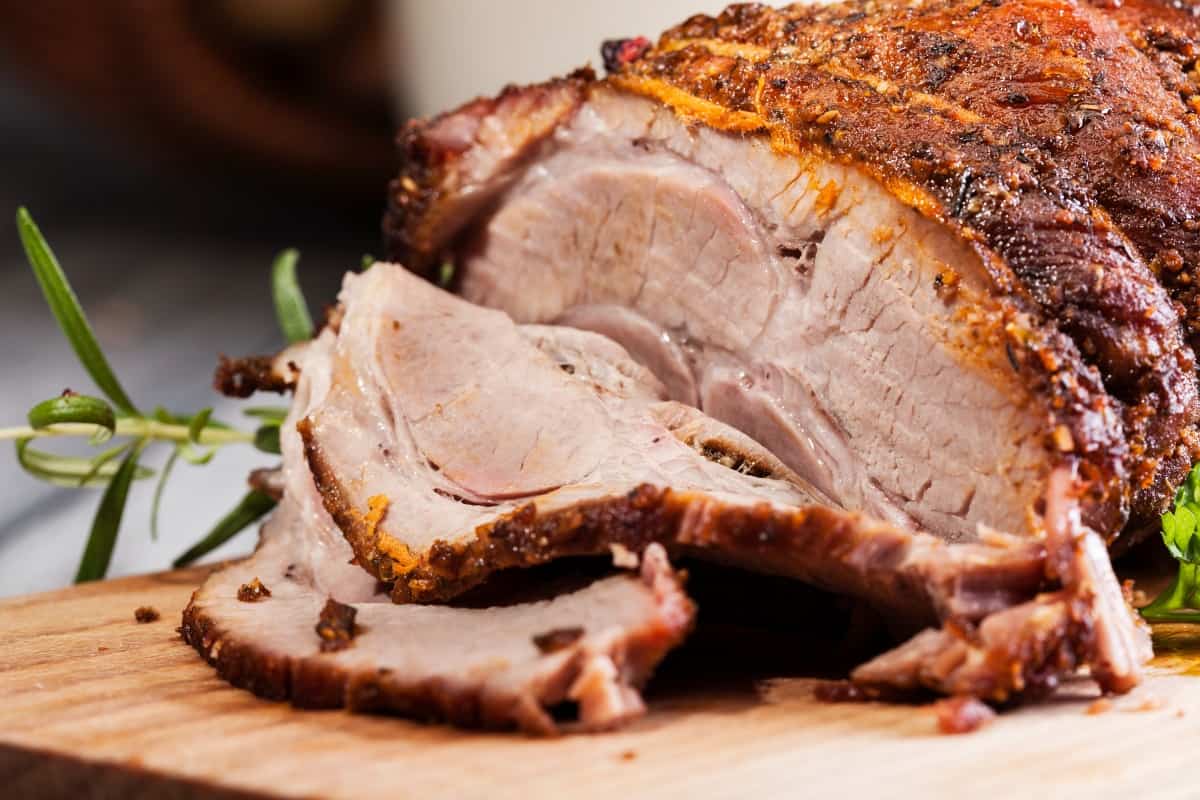
Opt for pork shoulder instead of a pork butt when you need the meat to maintain its shape when sliced or chopped.
Pork shoulder is ideal for roasting whole and slicing like ham, braising then slicing or chopping for serving, or cutting into chunks for stews or chili.
Typically sold with the skin on, it’s also the preferred choice for achieving crisp skin and pork crackling, though you can trim the skin off if desired.
Since this cut typically comes with the skin attached, it’s great to make crispy pork carnitas. Ah yes, the Mexican answer to pulled pork, carnitas is cooked low and slow and typically served in taco form. Because of the added benefit of the skin, you have the option to blast the heat near the end of the cook to crisp it up. The combination of melt in your mouth meat and crispy skin is out of this world!
Pork shoulder is also suitable for making ground pork and for sausage use. As it’s cheaper than a pork butt, you wouldn’t buy a butt simply for grinding up, you would save money and buy a shoulder for pretty much the same end result.
Nutritional Information for Each Cut
| Nutrition (per 100g) | Pork Butt | Pork Shoulder |
|---|---|---|
| Calories | 269 | 291 |
| Total Fat | 18g | 21g |
| Saturated Fat | 6.9g | 8.1g |
| Cholesterol | 86mg | 90mg |
| Sodium | 67mg | 68mg |
| Protein | 24g | 23g |
| Vit D | 1.3mcg | 1.5mcg |
| Calcium | 28mg | 24mg |
| Iron | 1.4mg | 1.3mg |
| Potassium | 332mg | 329mg |
Price Comparison
Pork butt is typically more expensive than pork shoulder per pound, primarily due to its popularity. It’s a simple supply and demand thing. Conversely, pork shoulder is usually less costly than pork butt.
I don’t wish to give exact monetary figures because it changes so often it will very soon be out of date. But a quick glance at a few online outlets tells me that generally, pork shoulder is around 10% to 20% cheaper than pork butt. This ballpark figure can fluctuate based on regional differences, the time of year, and other market conditions.
My advice is, don’t base your purchasing decision on which cut is cheaper per-pound, base your decision on how many people you need to feed. If you’re cooking just for your family of four, a picnic shoulder is all you really need. If you’re cooking for a larger gathering (10+ people), a Boston butt may be the better choice.
Which Requires Most Work to Cook?
This completely depends on the type of meal you are trying to prepare. If you’re simply planning to make pulled pork, they can both be considered 2 of the best meats for smoking, and there’s about as much work involved in preparing a butt as there is preparing a shoulder; with the obvious exception of removing the skin on the shoulder.
If you attempt to make carnitas, you will need to allow for extra steps to prepare the butt, like salting and dry brining the meat ahead of time, as well as the extra time needed to crisp the skin at the end.
What to Look for When Buying Pork Butt or Shoulder
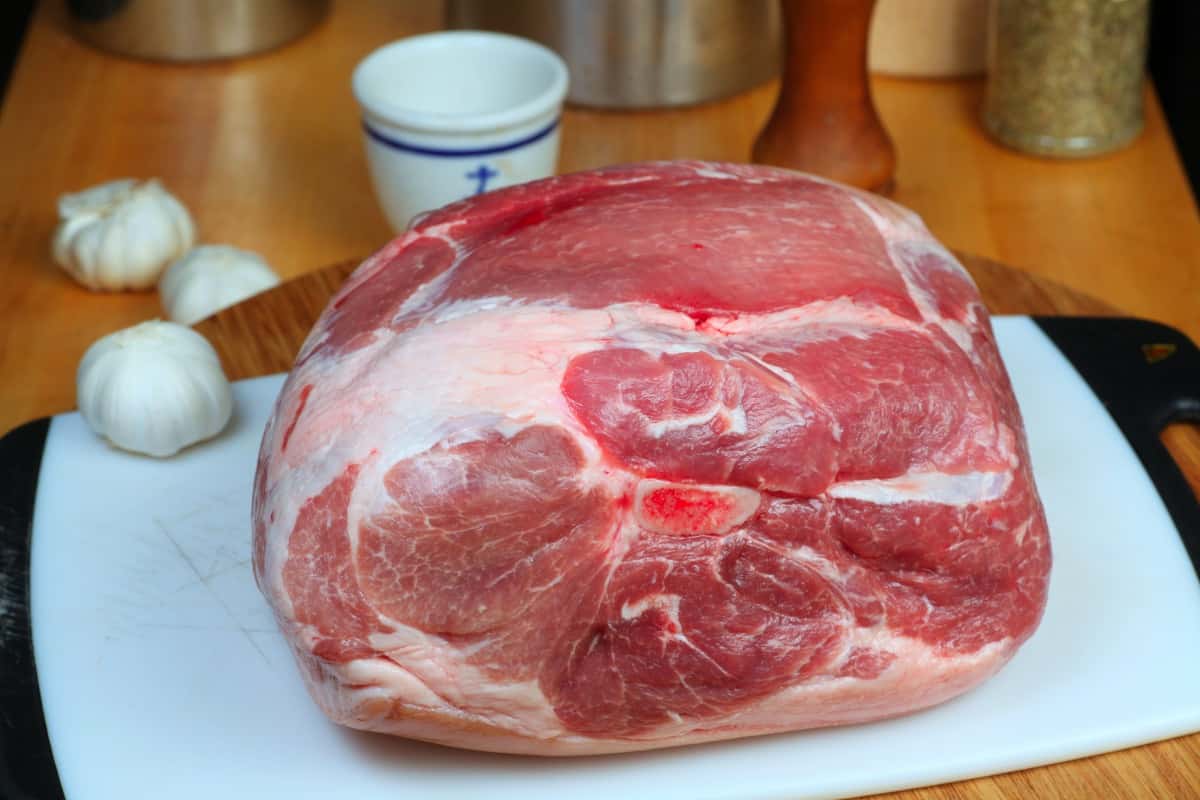
Bestselling author and PBS host Steven Raichlen has some great advice on what to keep in mind when you buy a pork shoulder.
Skip any shoulders that are labeled as “enhanced” with water, phosphates, salt, etc. When you buy these cuts, you’re just buying meat that has been injected with brine. In other words, you’re paying for water.
Look for meat that is well marbled with lots of fat running through the muscle, is rosy in color, and is not too wet inside the package. Don’t be alarmed if it smells a little funky straight from the package, this is common with any large cuts of meat; especially if packaged in cryovac.
When possible buy heritage breeds, like Berkshire and Duroc. These breeds are bred for flavor, not size, and tend to be better marbled than other breeds.
Due to the high amount of fat found in pork shoulder, it will typically lose 40 to 50 percent of its weight during cooking. If you’re making pulled pork, a generous serving would be 6 oz. per sandwich. Do the math backward when you go to buy — i.e., if you expect ten guests you’ll need at least 60 oz. cooked for ten sandwiches, and 120 oz. raw before you cook.
Where to Buy Pork Shoulder
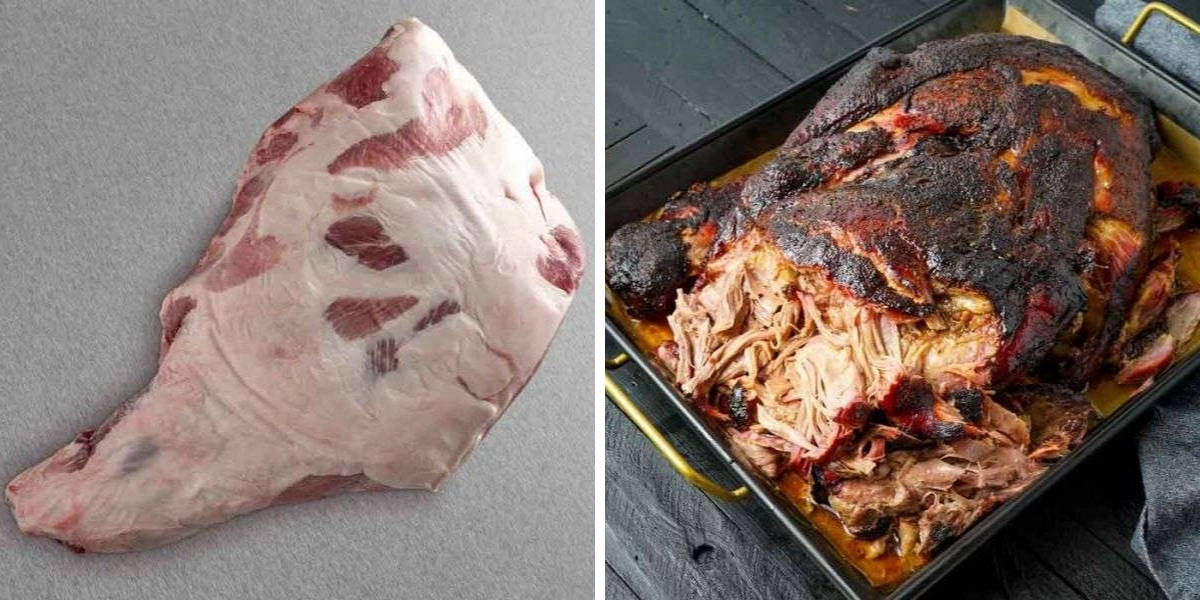
Not strictly a ‘pork shoulder’ — Snake River Farms cut the shoulder differently than is done in the US, so what you actually get is the Boston butt, picnic shoulder, foreshank, and pork collar all in one — Snake River Farms sells a huge 17 lb pork shoulder, that is 100% Berkshire (Kurobuta) pork, grown in their network of small family farms.
It is highly marbled and rich tasting, and great for cutting into roasts or smoking whole for a large amount of pulled pork.
Check Price on Snake River Farms
Where to Buy Pork Butt Online
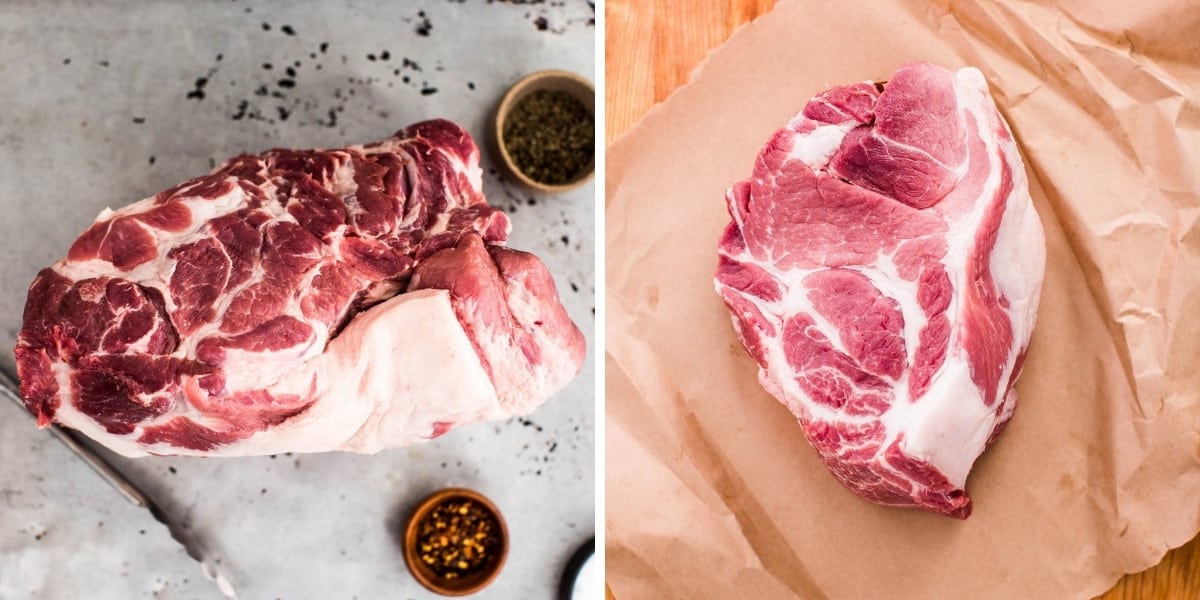
Pork butt is an extremely popular cut, so you shouldn’t have any difficulty in finding them for sale. That said, the pork butts on sale at Porter Road are outstanding.
The hogs these butts are taken from are pasture-raised, and free of any hormone or antibiotics. They also spend time in the woods, where they are free to roam and root, eating a more natural diet and working hard, that leads to a deeper flavor and impressive color than perhaps you’re used to.
A full butt from Porter Road weighs in at between 8 and 10 lbs, and if this is too much, they also sell a half butt weighing between 4 and 5 lbs.
Conclusion
We hope this article has at least answered some questions you may have about what the heck pork shoulder is, and how you can prepare it.
Do you think we missed anything? Can you think of any obvious pork shoulder recipes or techniques we’ve left out? Leave us a comment down below letting us know what you think!
Happy grilling!


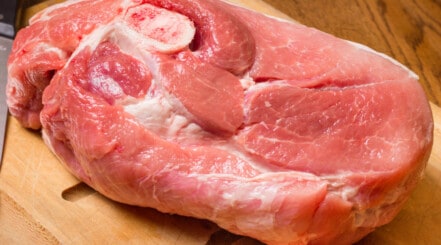

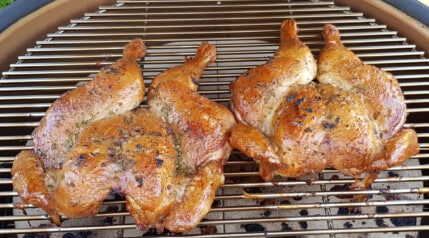

I like your very informative article. Simple and clear to comprehend.
Thanks, Emily 🙂
When making Carolina pulled pork, I use a brine on the pork butt containing apple cider vinegar, salt, water, some pepper and hot sauce. Slow smoke and pull. Sometimes if time is short I smoke for about 3 hours and finish off in a crock pot for several hours.
Yum, yum
Sounds great!
Good article. Not that it changes a lot in preparing, but I just like to know the facts. Thanks, for sharing.
Thanks, Eddie!
The roast I bought says pork butt shoulder roast, that is a little confusing.
Love your posts, another person is questioning my choice of meat so here I am to ask a professional? In our family, my mom always use pork shoulder when she makes this marinated pork skewers because she said it more tender than butt. I’ve used both, and I go with shoulder too, we slice it semi thin marinate and put them on skewers to grill. In your opinion which piece is the more tender piece.
Thank you.
Lynn
Hi Lynn,
If marinated with a view to tenderizing as well as adding flavor, I honestly don’t think there would be much difference.
The ‘picnic shoulder’ is further down the leg, does more work and so is naturally a slightly tougher cut. However, the butt does have more fat, and more connective tissue, and if this isn’t trimmed out — or rendered out by long, low n slow cooking – before making the skewers, will certainly give the impression of being tougher, even after marinating.
So I guess the shoulder is easier to prepare for tenderness, with the butt needing more careful trimming and selection of meat parts to use, but otherwise I don’t think there’s going to be much difference in my opinion.
I feel a blind taste test coming on! You both prepare some skewers each, BUT must use EXACTLY the same marinade, and cooking process. Then ask some friends and family members to taste one of each, blindfolded, not knowing which is which. This might lead to some unfriendly boasting rights for all eternity though! Lol.
You said you do not recommend slow cooking in the oven. Why not? I do not have a slow cooker and was planning on using a recipe which cooks 3-4 hours in the oven.
Thanks
Hi Charlene,
Because this is mostly a site dedicated to outdoor cooking, with live fire. For most people, and certainly for me, pulled pork is absolutely best with some added smoke flavor from burning wood, something you cannot do in your kitchen oven.
However, there is nothing to stop you cooking it in your kitchen oven, and I’m sure it will still be very good. You could perhaps add some ‘liquid smoke’ which is available at most supermarkets, to get even closer to ‘the real deal’ as it were. It won’t quite be the same, but will still be great I’m sure 🙂
I use both cuts to make Buckboard bacon. The butt portion benefits from removing as much accessible cartilage as possible after deboning and butterflying. Curing and slow smoking takes care of the rest. I also cure with liquid smoke and use a slow oven when necessary.
Sounds great, Stan. I’ve never actually made bacon from the butt (or shoulder.) I normally use a combination of loin with belly attached.
I use an EQ cure, and cold smoke. You can add lots of different flavors in the curing process, one of my favorites being maple syrup and bourbon, and another being a black treacle cured. I’ve also played with a cinnamon cure around Xmas time, I wasn’t too keen on that one. A herb one with rosemary, thyme etc. Was decent.
Real pulled pork has both butt and shoulder mix.
Which can you simmer with cabbage and potatoes and carrots?
Either would work in a recipe for braising. Both benefit most from long, low and slow cooking.
I have a pork shoulder Boston butt, I was going to make it on my Traeger grill, is this cut of meat better for pulled pork or will it be OK the have it as a roast
Hi Scott. You can roast it, then slice it. I’ve done this before, but to be honest other cuts of pork are better suited and take less work.
If you do it, you should debone it, remove any large bits of fat and connective tissue that you can after deboning, and then roll and tie it, so it’s a uniform shape, will cook more evenly, and be easier to carve.
It will be fatty, there will be some tough parts that people have to ‘eat around’, but you can still do it, and it is still nice. It’s not for everyone, and the only way to find out if you like it is, I’m afraid, to try it out and find out for yourself.
But yes, it’s recommended to make pulled pork from it to get the most from the meat, not to roast and then slice, which other cuts are better suited to.
Thank you for a clear, direct, and easy to follow article, Mark! This helps me understand the different cuts, thanks! 🙂
Which cut can I use for Chili Verde?
Hi, Fran. I believe boneless pork shoulder is typically used for Chili Verde, though I’m no expert on the dish I’m afraid.
My cut of meat says “Pork Shoulder Butt”, which one is it?
I’ve cooked pork before but never realized the difference. Thank you for explaining and how to cook it properly.
I’d like to know if the pork shoulder ham I use for a “Boiled Dinner” with potatoes carrots cabbage is the same?
Hi Dale,
Thanks for the kind words!
The main difference is: A pork shoulder is from a front leg of the animal, whereas a ham is from a rear leg. Also, ham is a cured meat.
My package says Pork Shoulder-Butt Roast on the Smithfield label but on the label from the grocery store it only says Pork Boston Butt Roast. So is it shoulder or butt??
Pork shoulder for Porchetta is awesome!
Thank you for the article, Mark.
I think I found a typo here, “ i.e., if you expect ten quests you’ll need at least 60 oz.”
Cheers!
Thanks, Daniel. Just fixed it!